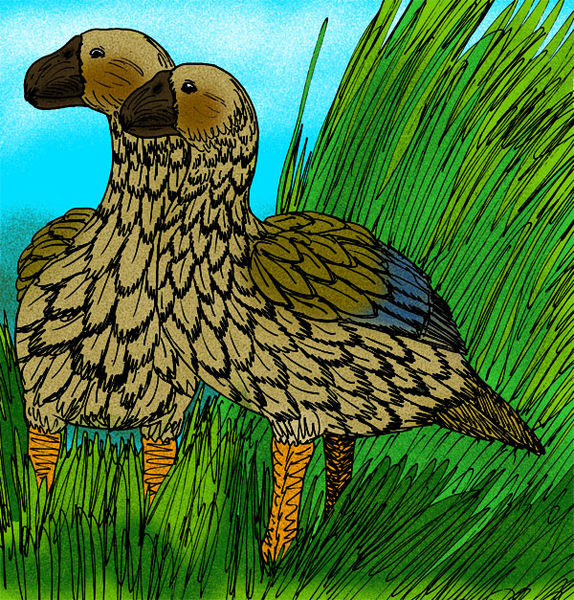 The extinction of the dodo is so well known, it became an idiom. But to recap: The large flightless bird was discovered on Mauritius in 1598 as the Dutch were settling the Indian Ocean island. By 1662, the bird was extinct, wiped out by humans and the animals they brought with them who found the dodo tasty and easy to catch.
The extinction of the dodo is so well known, it became an idiom. But to recap: The large flightless bird was discovered on Mauritius in 1598 as the Dutch were settling the Indian Ocean island. By 1662, the bird was extinct, wiped out by humans and the animals they brought with them who found the dodo tasty and easy to catch.
It might be easy to think that such a phenomenon is a modern one, that as Europeans branched out and settled the world, they brought death and destruction to the lands they conquered. But it wasn’t just Europeans, as a study published today by PNAS shows.
The goal of the study, led by the University of Canberra in Australia, was to estimate the number of bird species that went extinct as humans colonized remote islands in the South Pacific. These islands were some of the last places in the world to become inhabited — ranging from New Caledonia and Fiji, settled some 3,500 years ago, to Hawaii, around 700 to 900 years ago. And as with the dodo, when humans arrived, birds disappeared.
Determining how many bird species the islands once had, though, is rather difficult. Fossils are scarce for a lot of the islands. And differences in islands and species make generalizations from one island to the next complicated. The researchers got around this by employing a common technique from ecological studies: mark and recapture. The species that were on an island when Europeans arrived were the “marked” individuals and the fossil species were those that were “recaptured.” With those numbers, the scientists could extrapolate how many species had once existed on an island. And from the 41 islands they studied, they could extrapolate further to the group of 269 remote Pacific islands.
The research focused on nonpasserine land birds, which are better documented in the fossil record. The researchers estimated that about 1,000 species of these birds went extinct after humans arrived on these islands but before Europeans showed up. That’s around two-thirds of the distinct species that once inhabited those islands.
Most vulnerable were, not surprisingly, flightless birds and larger species, those that would have made for the easiest and best meals.
And the fewer islands on which a species could be found, the more likely it was go extinct; those that were endemic to a single island were among the most likely to disappear.
Smaller islands and those with less rainfall were also more likely to see extinctions. “Islands with lower annual rainfall were more extensively deforested in the period between first human and European arrival,” the authors write, “suggesting that higher rates of extinction were associated with greater loss of forest habitat in lower-rainfall areas.”
New Zealand was not included in the study, but the researchers say that its “large size, rugged landscape, and high rainfall sets it apart” from other Pacific islands, with the result that some large flightless birds, like the kiwi, have managed to survive.
That humans have been driving species to extinction for a long time is not really a shocker, though. Hunting, habitat destruction, the introduction of invasive species — these are not modern inventions, and neither are their results.
Image of moa-nalo by Stanton F. Fink, via wikimedia commons
